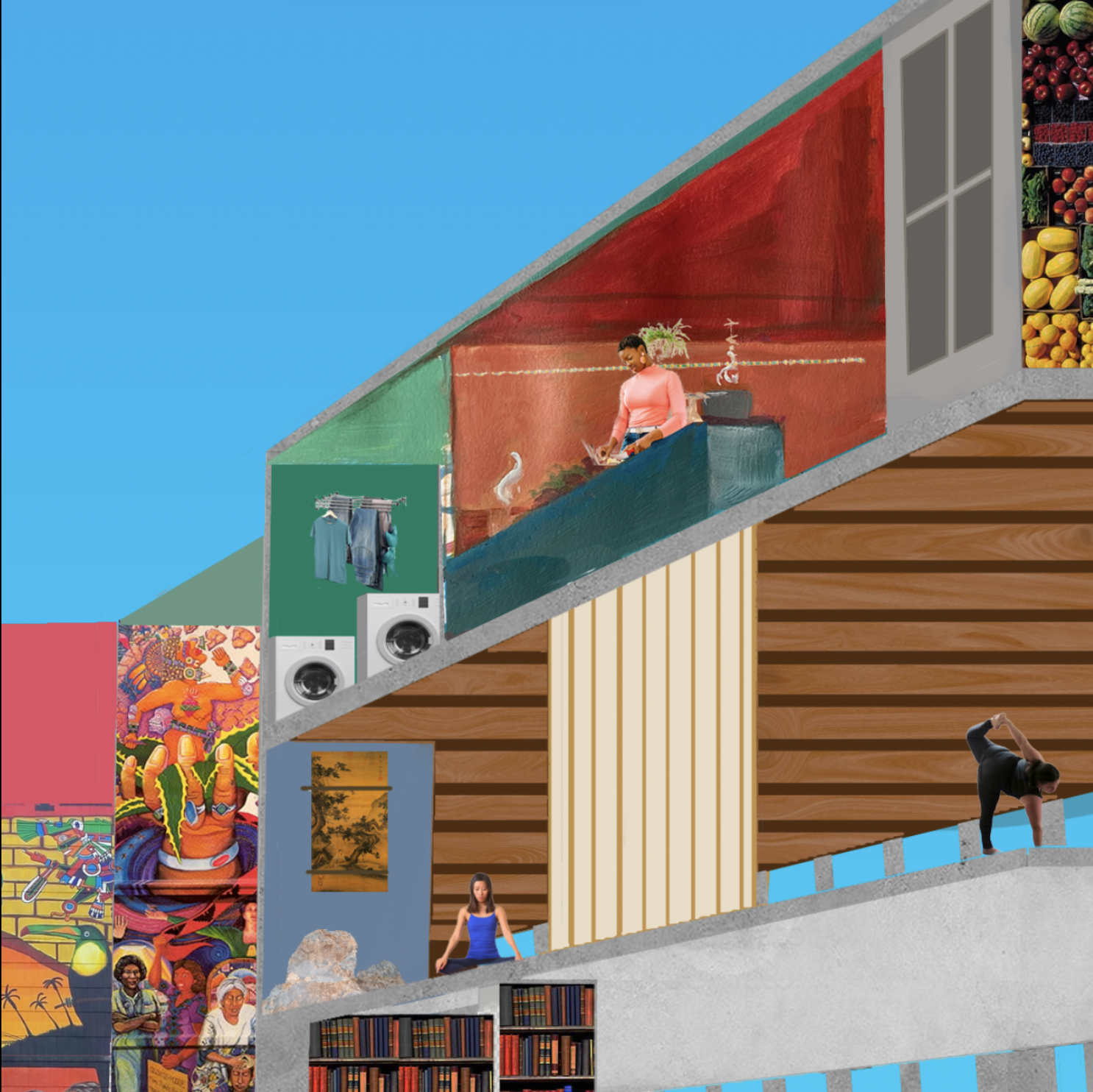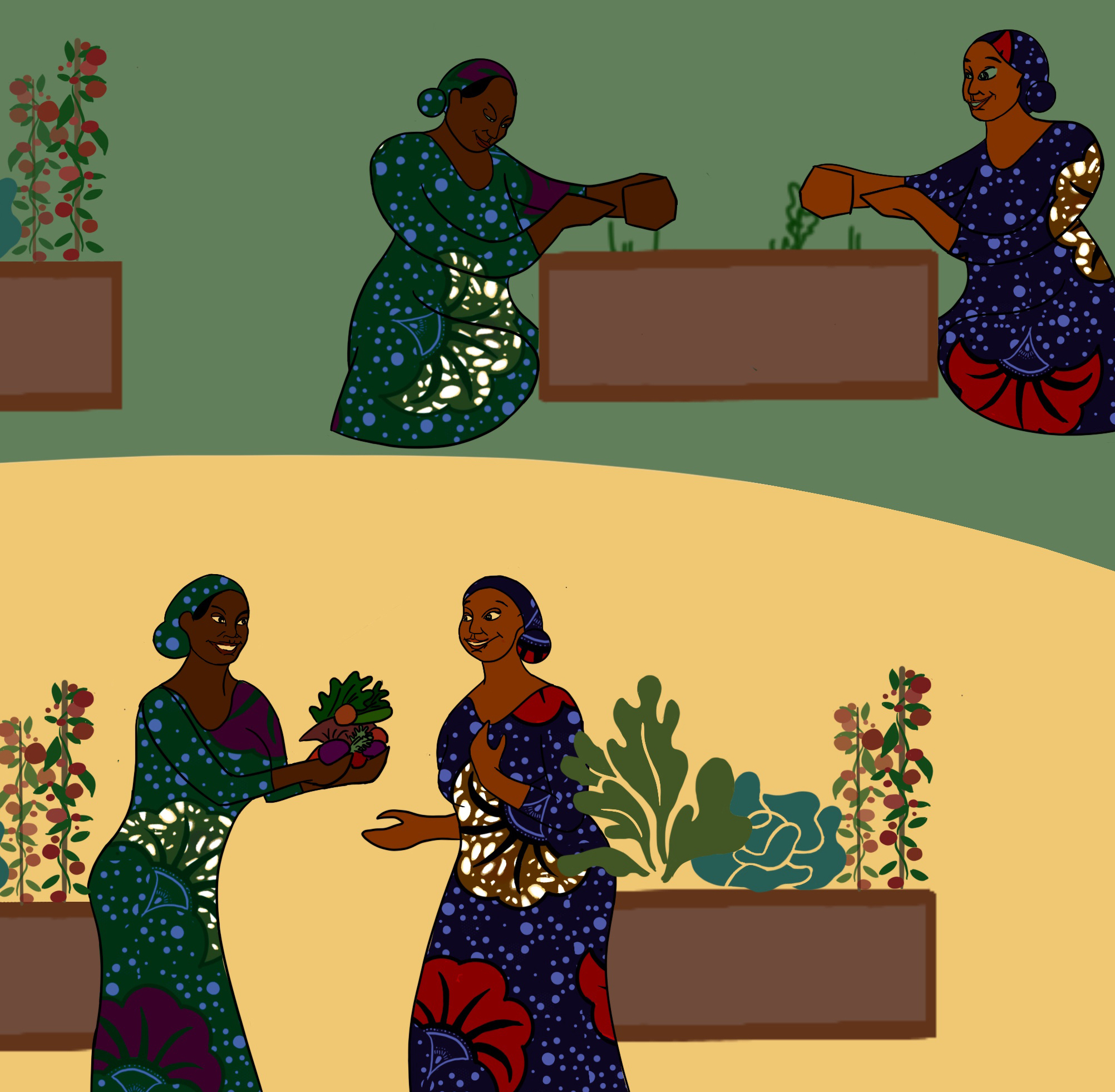San Francisco’s U.S. Mint Reclaimed
Spring 2021
Architecture Adv. Studio: After Property V2
Advised by Emanuel Admassu and in collaboration with Quincy Casey
Architecture Adv. Studio: After Property V2
Advised by Emanuel Admassu and in collaboration with Quincy Casey
“This studio aim[ed] to identify temporal slippages and spatial practices that carve out moments of liberation from the limits of property. We celebrate[d] undervalued spatial practices that actively dismantle the cartesian frame of racial capitalism, as a gathering of performances committed to imagining a different world, because the status-quo is untenable.”
The immigrant, Black and, Indigenous communities of San Francisco have been displaced and marginalized by homogenizing, linear forces. In the past 30 years, the tech industry has settled throughout the city, over immigrant neighborhoods. State regimes and tech workers have inflicted harm through fortification, removal, erasure, and exoticization.
The immigrant, Black and, Indigenous communities of San Francisco have been displaced and marginalized by homogenizing, linear forces. In the past 30 years, the tech industry has settled throughout the city, over immigrant neighborhoods. State regimes and tech workers have inflicted harm through fortification, removal, erasure, and exoticization.
We imagine the Mint reoccupied by the displaced communities by carving spaces of difference and collectivity. Enclaves of the city re-assemble space and re-imbue objects. Black and brown communities work to share and negotiate spaces of care. Spatial relationships respond to the common needs of the people and in opposition to oppression and violence from the city.

The U.S. Mint as it currently exists
The US Mint in San Francisco continues to manufacture non-circulating coins to a dying elite population. Requiring over 20 million dollars, a 50 meter high hill was built into the natural slope of San Francisco’s Mission District, protecting speciality coins without value and empty vaults. Many employees sourced from surrounding communities of color have been negatively affected by these systems of fortification and white supremacy.





Apple Headquarters and similar companies build protected luxurious offices with their employees as satellites into San Francisco. These international powers negate the very essence of the city. Exclusion and wealth dominate.
Difference is no longer negotiable. The city becomes inaccessible to the vast majority of people.
What if Fortification was inverted?
Marginalized communities that have been intimidated and subject to violence, now use these structures and spaces to build collectively and in support of one another. High walls, secretive passageways and rooms are reoccupied and are shaped into a new life.



Settlement patterns in the city after the colonization of the Ohlone indigenous people have always operated under the grid by designing enclaves of different neighborhoods, to either be prioritized or neglected. The grid ignores the natural steeping and changing topography of the land. Points of lower elevation are restricted to communities of color, while neighborhoods of higher elevation are reserved for white families and old wealth.
The Ellis Act encouraged landlords to evict long standing immigrants to make way for tech workers that then commodify and consume culturally significant spaces and aesthetics. Starting from the dotcom boom, the number of evictions in the city is reaching 1,000. The densest spaces of evictions are Chinatown, with Latinx and African American communities following. These families with generational histories in these homes and spaces, are exiled from the city and are continually pushed further and further out from the expanding Silicon Valley.





The oldest generation of Latine immigrants in the city still holds their restaurant. They finish the exterior of their shop with an assemblage of objects that claim their heritage, even within the restricted grid.
Looking back at where this family and their community comes from, Jalisco, Mexico, we find an architectural technique, which instead develops spatial relationships in response to differences and similarities through the use of varied materials, colors, and patterns.
Chinatown in San Francisco, and across the country has been shaped under the white gaze. As a survival tactic, building facades are ornamented to appeal to the sensibilities of the tourist consumer. These superficial archaic aesthetics perpetuate the neglect, racism, and hate crimes that Chinese Americans continue to receive in times of disaster.
We looked at the multiplicity of Chinese architecture by looking at intimate forms of interiority. With a similar topography to San Francisco, Yaodong caves in Northern China shape relationships with the land and occupants. Light wells, tunnels, rooms, and furniture are carved in respect to the land, light, its purpose, and it’s people.
Chinatown in San Francisco, and across the country has been shaped under the white gaze. As a survival tactic, building facades are ornamented to appeal to the sensibilities of the tourist consumer. These superficial archaic aesthetics perpetuate the neglect, racism, and hate crimes that Chinese Americans continue to receive in times of disaster.
We looked at the multiplicity of Chinese architecture by looking at intimate forms of interiority. With a similar topography to San Francisco, Yaodong caves in Northern China shape relationships with the land and occupants. Light wells, tunnels, rooms, and furniture are carved in respect to the land, light, its purpose, and it’s people.



We imagine the mint to be reoccupied by the displaced communities by carving spaces of difference and collectivity. Discarded objects and spaces are reassembled and re-imbued. Communities share and negotiate space. Spatial relationships respond to the common needs of the people and in opposition to the violence from the city.





︎︎︎ ︎︎︎ ︎︎︎












